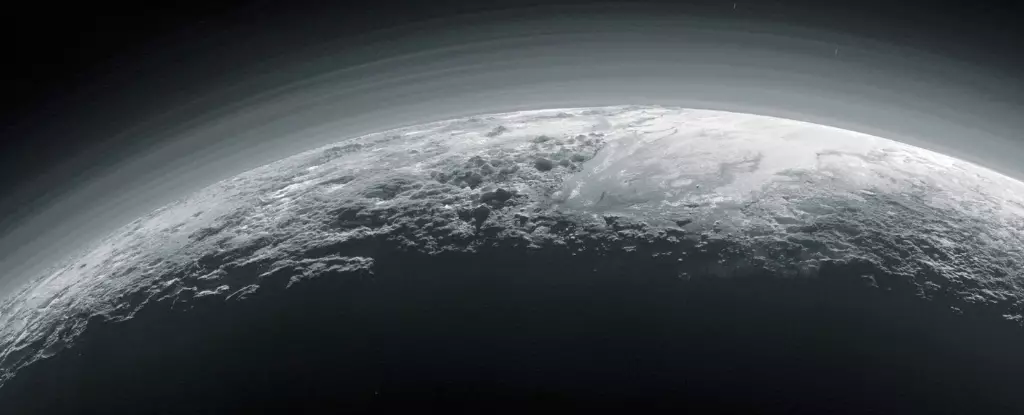In 2015, the New Horizons spacecraft captured the world’s imagination as it zipped past Pluto and its companion Charon, unveiling previously hidden intricacies of these distant bodies. The revelations were staggering, with Pluto exhibiting an active atmosphere that challenged conventional wisdom regarding celestial bodies. Yet, it is the new observations made by the James Webb Space Telescope (JWST) in 2022 and 2023 that are shifting our understanding into a higher gear. Pluto is not just another cold dwarf planet; it offers a unique atmospheric composition and behavior that stands out in the Solar System.
A Complex Haze Better than Expected
What sets Pluto’s atmosphere apart is its bewildering haze made up of nitrogen, methane, and carbon monoxide. This atmospheric mixture is unlike any other, demonstrating a dynamic ebb and flow as particles rise and fall with temperature changes. This phenomenon, which scientists believe is unprecedented in our solar neighborhood, indicates an intricate interplay of atmospheric particles that actively regulate thermal balance. According to astronomer Xi Zhang of the University of California – Santa Cruz, the idea of this unique haze was deemed audacious back in 2017. However, what was once deemed “crazy” has proven to be prophetic as JWST’s infrared observations corroborate these unconventional hypotheses.
The implications are substantial. While gas molecules typically control thermal conditions in other planetary atmospheres, Pluto’s haze particles operate under a different set of rules. This unusual characteristic presents an exciting opportunity for researchers, offering a model that aligns with ancient conditions of Earth—a crucial link in understanding planetary atmospheres.
Decoding Atmospheric Chemistry and Thermal Behavior
The findings made possible by JWST raise intriguing questions about the role of hazes in atmospheric dynamics. With a focus on mid-infrared measurements, the telescope analyzed Pluto’s atmospheric heat balance in remarkable detail. Scientists harnessed data across various wavelengths, seeking to sketch an intricate picture of the planet’s changing thermal landscape.
Crucially, the range of measurements allowed scientists to observe temperature variations across both Pluto and Charon during their rotations. The disparities revealed strong interactions between surface temperatures and atmospheric conditions, ultimately suggesting a surprising mobility of ice deposits across the vibrant surface of Pluto. These cyclical distributions of ice and material between Pluto and its moon are phenomena that remain unparalleled elsewhere in our solar system.
Insights into Planetary Evolution
What’s remarkably exciting about the new JWST data is its potential to offer insights into Earth’s formative years. In an era when our world was a volatile crucible of nitrogen and hydrocarbons, the atmospheres of planets like Pluto can provide valuable context. Zhang hints that the chemistry driving Pluto’s haze may symbolize similar processes that contributed to the early habitable conditions on Earth.
This line of research isn’t just confined to dwarf planets like Pluto. The atmospheric intricacies observed in Pluto seem to bear similarity with those on Triton, Neptune’s enigmatic moon, and Titan, Saturn’s intriguing satellite. The interplay of nitrogen and hydrocarbons in these celestial configurations invites a closer examination of how such elements interact in extreme environments, pushing our boundaries of knowledge.
The Future of Planetary Exploration
As scientists continue to delve into the atmospheric mechanics of Pluto using JWST data, it represents only the beginning of what promises to be an extensive journey into planetary science. The nuances of Pluto’s atmospheric behavior serve not only as isolated observations but as vital pieces in a larger cosmic puzzle aimed at understanding extreme environmental conditions across the solar system.
The prospect that Pluto might be a key to unraveling the conditions that allowed Earth to flourish cannot be overstated. As understanding deepens, we inch closer to grasping the fundamental processes underpinning not just our existence, but the very essence of life on planets across the cosmos. The path from Pluto’s shocking revelations to broader cosmic insights sets a profound stage that inspires future generations of explorers and scientists alike.

